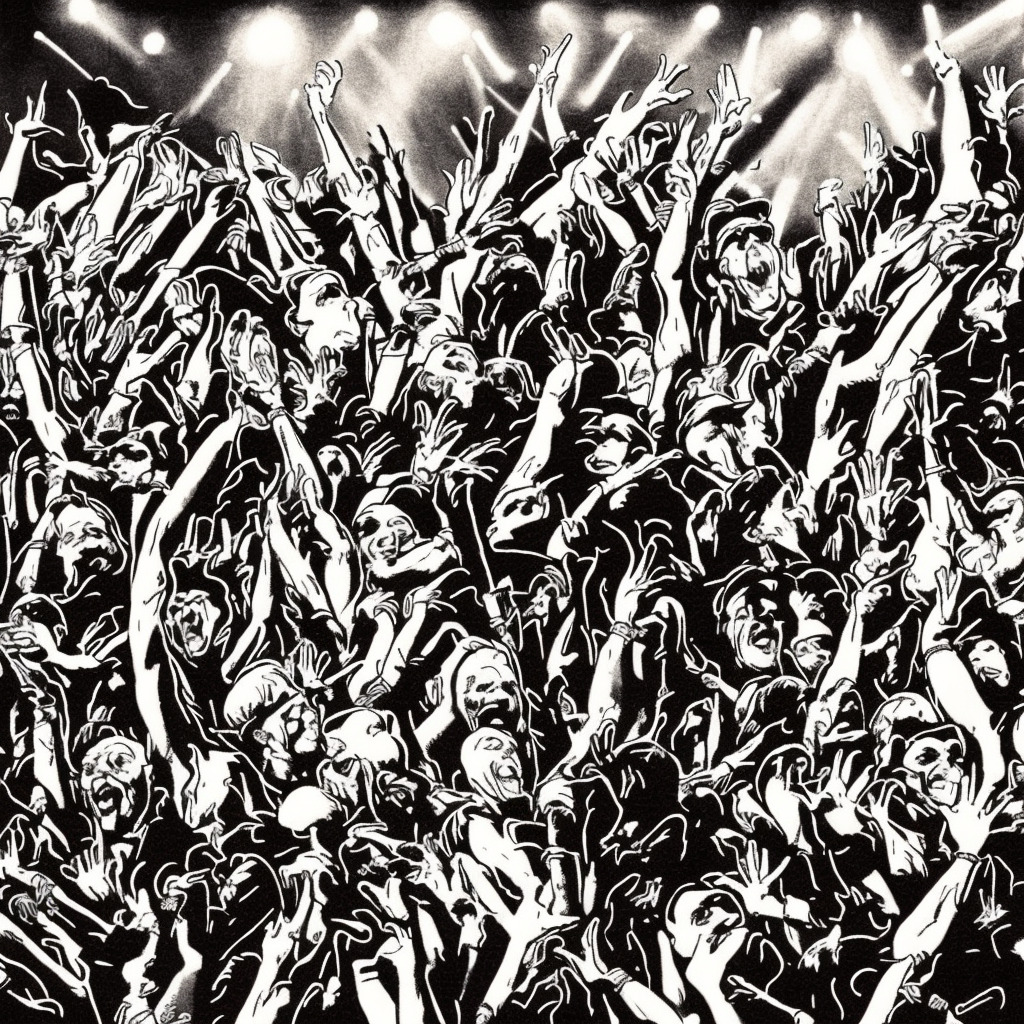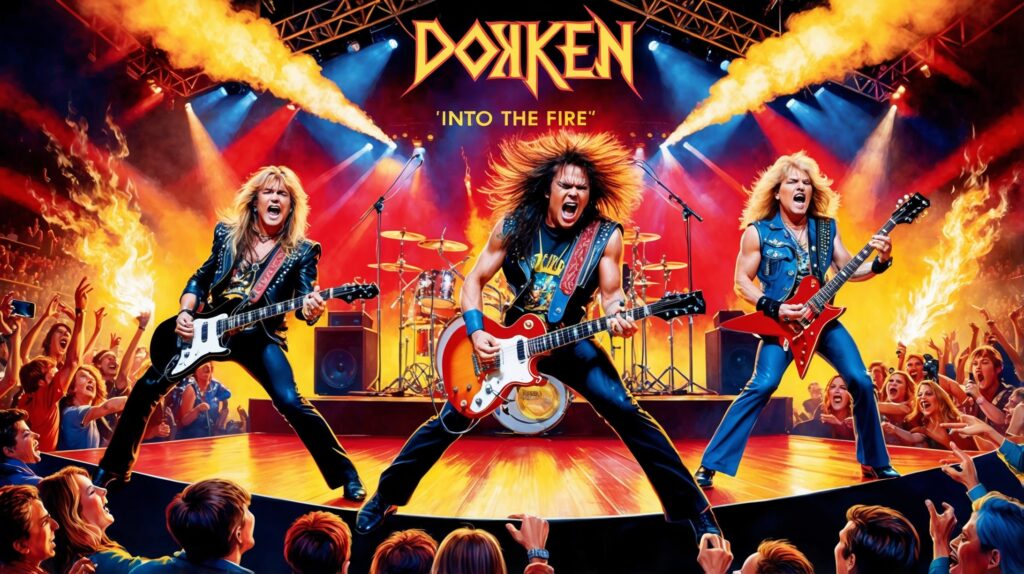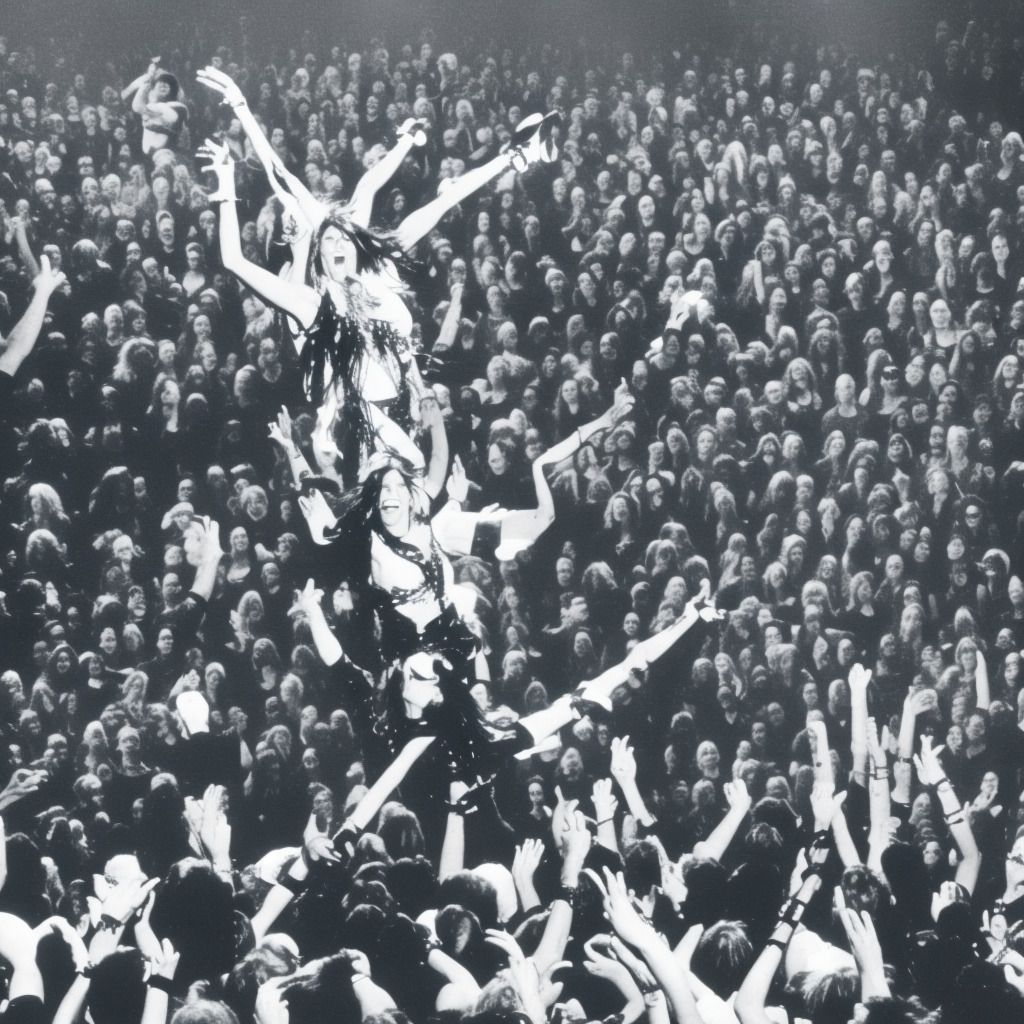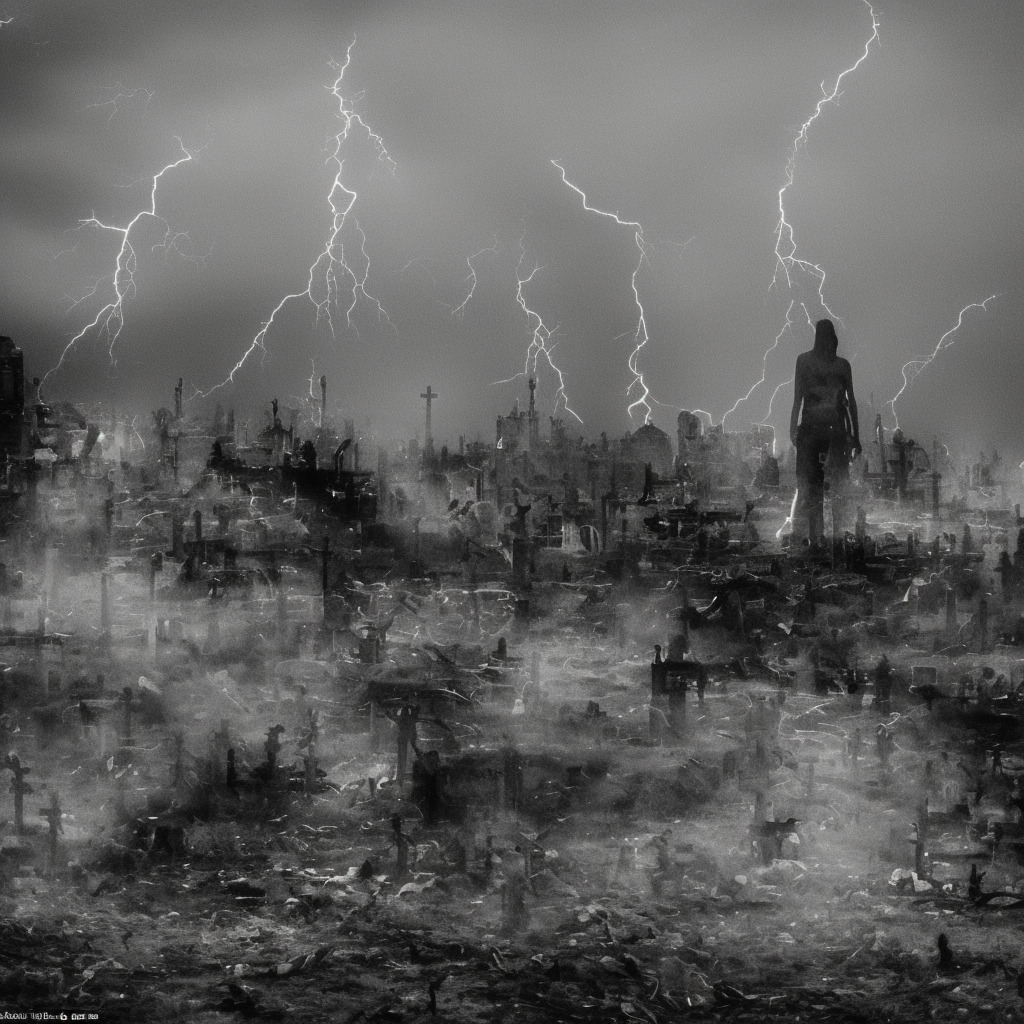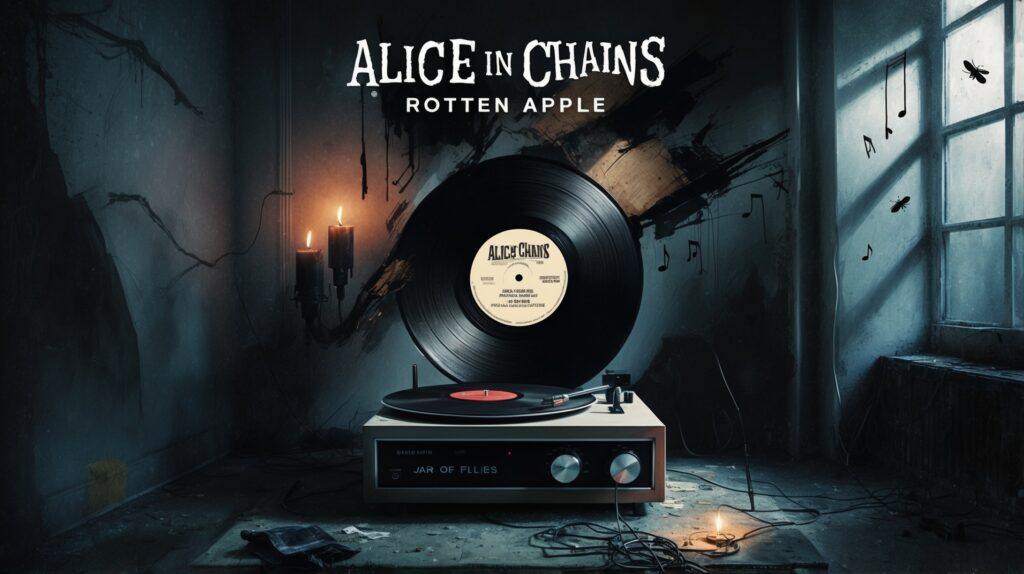?Did you know? “Balls to the Wall” by #Accept was inspired by Pink Floyd’s “The Wall”! A rebellious anthem to rock your socks off!?Turn it up and join the revolution!? #MusicTrivia #ClassicRock #80sRock Read about it: tinyurl.com/99r78u6c
Breaking Down Barriers with Accept
Unleashing four decades of heavy metal fury, Accept shatters conventions with their iconic sound, championing the genre with timeless classics like “Balls to the Wall” and a relentless passion for metal mastery.

When discussing the titans of heavy metal, one cannot simply overlook the German powerhouse that is Accept. Formed in 1976, Accept has become a staple in the genre, with an impressive career spanning over four decades. The band currently consists of lead vocalist Mark Tornillo, guitarists Wolf Hoffmann and Uwe Lulis, bassist Martin Motnik, and drummer Christopher Williams.
One of their most iconic songs, “Balls to the Wall,” was released in 1983 and is still regarded as a heavy metal classic. The track showcases Accept’s unique blend of powerful vocals, driving guitar riffs, and infectious melodies, ultimately capturing the spirit of 80s metal. The song, which serves as the title track of their fifth studio album, truly put the band on the map and solidified their place in metal history.
Though Accept has experienced numerous lineup changes throughout their career, the passion and energy they bring to their music has never wavered. Their early years were marked by the distinct vocal stylings of Udo Dirkschneider, whose raspy yet melodic voice became synonymous with the band’s sound. However, the arrival of Mark Tornillo in 2009 brought a renewed vigor to Accept, as he took on vocal duties and helped lead the band into a new era.
Despite the band’s undeniable talent and impact on the metal scene, they have faced their fair share of criticisms. Some detractors argue that Accept’s sound can be formulaic, relying heavily on a similar structure and style across their repertoire. However, the band’s die-hard fans appreciate the consistent approach to their music, as it allows them to maintain their signature heavy metal edge.
Throughout their career, Accept has not been without accolades. In 2011, they received the Legends of Rock Award at the Hard Rock Hell festival in the UK. Wolf Hoffmann, as the driving force behind the band’s guitar work, was also honored with the Golden God Award for Riff Lord at the 2018 Metal Hammer Golden Gods Awards.
In summary, Accept remains a highly influential force within heavy metal, with “Balls to the Wall” standing as a testament to their unrelenting sound and drive. As the band continues to produce new music and tour, they maintain their status as icons of the genre, solidifying their place in the hearts of metal fans worldwide.
Charting the Path of an 80’s Heavy Metal Anthem
Climbing the charts and breaking boundaries, Accept’s 1983 heavy metal anthem “Balls to the Wall” showcases the band’s lasting impact on the genre, transcending its modest chart performance.

Released as a single on December 5th, 1983, “Balls to the Wall” by Accept quickly became an anthem in the heavy metal world. Despite its popularity among fans, the song had a rather modest performance on the music charts. However, it gained significant recognition and appreciation over time, becoming a true testament to the band’s influence on the genre.
Upon its release, “Balls to the Wall” initially entered the US Billboard Hot 100 chart at #74. It steadily climbed up the chart and eventually peaked at #56 on March 3rd, 1984. While this may not seem particularly impressive when compared to other chart-topping hits of the time, it is worth noting that heavy metal was still somewhat of an underground genre in the early 1980s. As such, the fact that the song managed to break into the Hot 100 chart at all is quite an accomplishment.
The song fared somewhat better on the US Mainstream Rock (then-called Top Rock Tracks) chart, where it reached its peak position of #38 on February 18th, 1984. Although “Balls to the Wall” did not become a massive chart success like some of its contemporaries, it managed to leave an indelible mark on the heavy metal scene and played a role in propelling the genre into mainstream popularity.
In addition to its performance on the US charts, “Balls to the Wall” gained traction in other countries as well. The song reached #75 on the UK Singles Chart in February 1984, marking the first time an Accept song had entered the UK charts. It also climbed to #29 on the Canadian RPM Top Singles chart in April 1984, showcasing the band’s growing international fanbase.
One interesting piece of chart trivia regarding “Balls to the Wall” is its inclusion in the 1984 edition of the “K-Tel’s Masters of Metal” compilation album. The album, which featured heavy metal hits from various artists, reached #146 on the US Billboard 200 chart. This further solidified the song’s status as a quintessential heavy metal anthem of the era.
Though “Balls to the Wall” may not have reached the highest positions on the charts, its impact on the heavy metal genre and its enduring legacy are undeniable. As the years have gone by, the song continues to be celebrated and revered by both fans and musicians alike, proving that chart success is not always the definitive measure of a song’s lasting influence.
A Closer Look at the Lyrics: The Spirit of the Times
You get your balls to the wall, man
Balls to the wall
You get your balls to the wall, man
Balls to the wall – balls to the wall
You may screw their brains
You may sacrifice them, too
You may mortify their flesh
You may rape them all
One day the tortured stand up
And revolt against the evil
They make you drink your blood
And tear yourself to pieces
You get your balls to the wall, man
Balls to the wall
You get your balls to the wall, man
Balls to the wall – balls to the wall
The lyrics of “Balls to the Wall” by Accept are a representation of the rebellious and bold spirit that permeated the music scene of the early 1980s. Released in 1983, the song addresses the concept of pushing oneself to the limit and fighting against oppression. The imagery in the lyrics is both dark and vivid, reflecting the band’s heavy metal roots and the general atmosphere of the time.
In the context of the era, the world was facing a variety of political and social upheavals. The Cold War was still in full swing, with the fear of nuclear conflict looming large. Economic struggles were also widespread, leading to increased frustration and anger among the working class. This feeling of unrest is evident in the lyrics, as the song speaks of the “tortured” standing up and revolting against evil.
The phrase “balls to the wall” is commonly understood as giving it your all, or pushing yourself to the absolute limit. In this song, it serves as a rallying cry for those who are tired of being oppressed and are ready to take matters into their own hands. It’s a call for relentless determination in the face of adversity, a timeless message that resonates with listeners even today.
In conclusion, “Balls to the Wall” is a powerful anthem that captures the spirit of the early 1980s, with its potent blend of rebellion, aggression, and a refusal to accept the status quo. As an experienced music blogger, it’s always fascinating to see how the lyrics of a song can so accurately reflect the world in which it was created, and “Balls to the Wall” is no exception.
Balls to the Wall: The Music Video
Unleashing raw rebellion: Accept’s “Balls to the Wall” music video encapsulates the anthem’s grit and intensity through moody lighting, intimate close-ups, and unfiltered camera work.
When it comes to the music video for Accept’s iconic 1983 anthem “Balls to the Wall,” there’s a certain rawness and intensity that perfectly captures the essence of the song. Directed by Gabi Becker, the video features the band performing the song live in a dimly lit, smoke-filled room, which amps up the sense of rebelliousness and grittiness.
Although the music video may not have had a massive budget, the simple yet effective production choices convey the power of the song. The close-up shots of the band members’ faces, particularly lead singer Udo Dirkschneider’s intense expressions, create a sense of intimacy and reinforce the idea that this song is meant to be an anthem for the disenfranchised.
The lighting and camera work play a significant role in the video’s overall feel. The use of dark and moody lighting with occasional flashes of light create a stark contrast, mimicking the song’s themes of struggle and resistance. Additionally, the quick cuts and handheld camera work give the video a raw and unfiltered feel.
As for the choreography and set design, the band members are shown in their element, surrounded by their instruments and performing with passion. The simple stage set-up allows the focus to remain on the music and the powerful lyrics. In fact, the music video features multiple shots of the band members banging their heads and playing their instruments with fervor, fully embodying the spirit of the song.
While there may not be an official alternate version of the “Balls to the Wall” music video, the impact of the song on its fans is evident through various tributes found on YouTube. Ranging from amateur covers to humorous parodies, the internet is filled with passionate responses to Accept’s hit song, further proving the lasting influence this track has had on the world of rock and metal.
The Man Behind the Wall: A Look at Accept’s Composer
When it comes to the mastermind behind “Balls to the Wall,” it’s none other than Accept’s lead guitarist and primary songwriter, Wolf Hoffmann. Born in 1959 in Solingen, Germany, Hoffmann joined Accept in the mid-’70s and has been a driving force in the band’s musical evolution ever since. Besides the iconic “Balls to the Wall,” Hoffmann’s songwriting prowess can be heard in other notable tracks such as “Fast as a Shark,” “Princess of the Dawn,” and “Metal Heart.” With his unique blend of classic heavy metal and melodic hooks, Hoffmann has become a respected figure in the music industry, solidifying Accept’s status as a dominant force in the world of metal.
A Legacy that Stands the Test of Time
“Balls to the Wall” – an ageless anthem conquering media and inspiring artists, cementing its status as heavy metal’s enduring beacon.
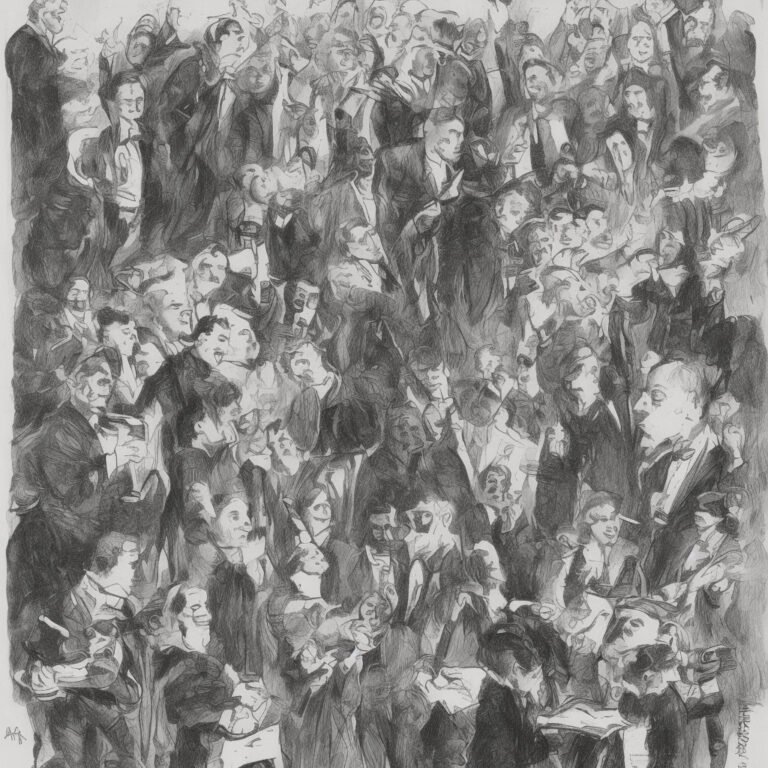
Since its release in 1983, “Balls to the Wall” has become a defining anthem for the heavy metal genre, earning the German band Accept significant recognition in the music world. The track also appeared on their fifth studio album of the same name, which was their first album to go gold in the United States, signifying over 500,000 copies sold.
A testament to the song’s timeless appeal, “Balls to the Wall” has been featured in various forms of media over the years. In 2011, the track made its way into the action-comedy film “The Hangover Part II”, adding a lively and intense musical backdrop to the movie. Additionally, the song has been included in video games such as the 2004 karaoke game “SingStar” and the 2007 multiplatform game “Guitar Hero Encore: Rocks the 80s”, allowing players to rock out to the classic tune.
The popularity of “Balls to the Wall” has also inspired several notable cover versions over the years. In 2005, the Swedish metal band Amon Amarth paid tribute to Accept by recording a cover of the song for their “Fate of Norns” reissue. Renowned guitarist Paul Gilbert also shared his take on the track in a 2006 live recording, showcasing his incredible guitar skills. In 2011, the Finnish metal supergroup Northern Kings, consisting of members from bands like Nightwish, Sonata Arctica, and Teräsbetoni, released their symphonic interpretation of the song. Most recently, in 2018, the all-female metal band Thundermother released their rendition, adding a fresh twist to the classic hit.
Despite being released nearly four decades ago, “Balls to the Wall” continues to resonate with music fans and musicians alike, securing its place as an iconic heavy metal anthem. This powerhouse song’s influence and impact on the genre are undeniable, with its numerous appearances in media and multiple cover versions standing as a testament to its enduring legacy.
Diving Deep into the Musical Structure
When we take a closer look at the musical structure of “Balls to the Wall,” we can truly appreciate the genius of Accept. The song is written in the key of C minor, giving it a dark and powerful vibe that matches the lyrical content perfectly. The tempo of the song is set at a steady 120 BPM (beats per minute), which allows for an intense and driving rhythm throughout.
The chord progression in the verses follows a fairly simple pattern, alternating between Cm and G#sus4, with a turnaround involving Fm, G, and G#. This simple structure allows the powerful guitar riffs and melodies to take center stage, while still providing a solid foundation for the vocal performance. In the chorus, the chords shift to Cm, G, and A#, adding a sense of uplifting resolution to the intense verses.
One of the standout elements of “Balls to the Wall” is the iconic guitar riff, which features a heavy use of palm-muted power chords and a memorable melodic hook. This riff is played throughout the song, providing a strong backbone for the band’s trademark sound. The guitar solos, played by Wolf Hoffmann, showcase his incredible technical prowess and tasteful phrasing, as he weaves in and out of the song’s harmonic framework with ease.
The rhythm section, comprised of bassist Peter Baltes and drummer Stefan Kaufmann, is equally impressive. Their tight, locked-in groove provides the foundation for the song’s driving tempo, while also allowing for plenty of dynamic interplay between the instruments. Kaufmann’s drumming, in particular, is a highlight, with his thunderous kick drum and snappy snare hits propelling the song forward.
Another key aspect of “Balls to the Wall” is the powerful and commanding vocal performance by Udo Dirkschneider. His distinctive raspy voice cuts through the mix, delivering the song’s defiant lyrics with conviction and intensity. The backing vocals, provided by the rest of the band, add a rich harmonic layer to the chorus sections, further elevating the song’s anthemic quality.
Overall, the combination of memorable guitar riffs, a solid rhythm section, and a powerful vocal performance make “Balls to the Wall” a true classic in the realm of heavy metal. The song’s musical structure, while seemingly simple on the surface, is expertly crafted to showcase the band’s strengths and create an unforgettable listening experience.

